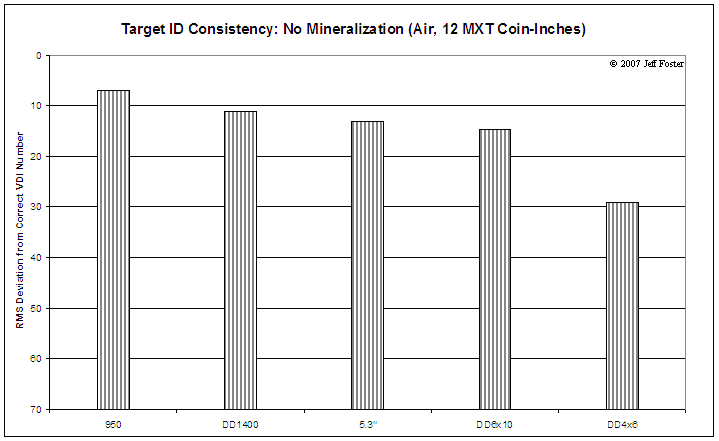
The MXT Edge
Sample "In-Mineralization" Target ID Consistency Graph

| “These
tests were performed using a U.S. five cent
"nickel" coin. This coin is alloyed with
copper making it non-magnetic. It produces a VDI
number of +20 "in air." These tests [only the Very Low Mineralization ("in-air") test graph is shown in this excerpt] show how the different available White's search coils compare in cases of increasing mineralization. This information should prove useful in making better decisions on search coil selection. The mineralization levels, as measured with the mineralization level estimation technique on page 71, are provided for each test. A test environment was created allowing the control of the amount of ferrous mineralization in the test soil. For each ferrous mineralization level, the target coin was positioned in the test soil. Then approximately 40-50 evaluative sweeps were made over the test target, with the VDI response recorded for each sweep. The process was repeated for each of the five White's search coils. This process was repeated for different target depths. And, the whole process was repeated for different levels of ferrous mineralization. Statistical methods are applied to the collected data to present the following results. Each graph shows how the individual search coils performed, relative to each other, for increasingly strong levels of ferrous mineralization.” |
Back © 2007 Field Depth Enterprises |